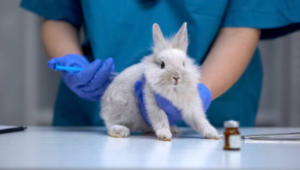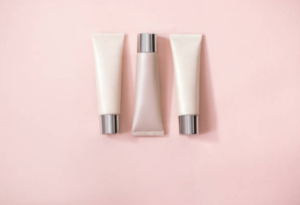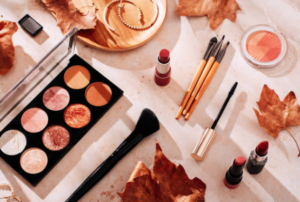Beauty Without Bunnies

In a world where beauty standards and the cosmetics industry have a profound influence, it is becoming increasingly essential to be mindful of the impact of our beauty choices on the environment and animal welfare. The beauty industry, notorious for animal testing, is slowly but surely transforming, thanks in large part to the tireless efforts of animal rights organizations. In this extensive blog, we will explore the significant role these organizations play in promoting cruelty-free cosmetics, shedding light on the inspiring journey towards beauty without bunnies.
For decades, animal testing has been a standard practice in the cosmetics industry. Companies have used animals like rabbits, mice, and guinea pigs to test the safety and efficacy of their products. These tests often involve the application of chemicals to the animals’ skin or eyes, sometimes leading to severe suffering, blindness, or even death.
The use of animals in cosmetics testing is not only inhumane but also scientifically questionable. Due to species differences, testing on animals doesn’t always provide accurate information about the potential effects on humans. Thankfully, there’s a growing awareness and commitment to ending these cruel practices, and animal rights organizations have played a pivotal role in driving change.
Animal Rights Organizations Leading the Way
- PETA (People for the Ethical Treatment of Animals)PETA is perhaps the most recognizable and influential animal rights organization globally. Their dedicated campaigns against animal testing in the beauty industry have sparked significant change. Here are some of their key contributions:
- Beauty Without Bunnies Program: PETA’s “Beauty Without Bunnies” program is a comprehensive resource for consumers seeking cruelty-free products. It features a database of cruelty-free brands and companies, making it easier for individuals to make ethical beauty choices.
- High-Profile Advocacy: PETA is known for its high-profile advocacy campaigns against companies that test on animals. Through eye-catching protests, celebrity endorsements, and impactful investigations, PETA has raised awareness about the cruelty of animal testing.
- Corporate Engagement: PETA actively engages with cosmetics companies, encouraging them to adopt cruelty-free policies. Their negotiations and partnerships with brands have resulted in many well-known companies pledging to go cruelty-free.
- Cruelty-Free InternationalCruelty-Free International is a global organization committed to ending animal testing for cosmetics worldwide. They have made substantial progress in driving the adoption of cruelty-free practices. Their notable contributions include:
- Leaping Bunny Certification: Cruelty-Free International’s Leaping Bunny certification is recognized internationally. It guarantees that a brand does not test its products on animals at any stage of production, ensuring transparency for consumers.
- Global Advocacy: The organization actively advocates for the adoption of cruelty-free legislation in various countries and regions, pushing for a worldwide ban on animal testing for cosmetics.
- Corporate Partnerships: Cruelty-Free International works in collaboration with companies to help them navigate the process of becoming cruelty-free. Their support has played a crucial role in convincing many brands to make the ethical shift.
- The Humane Society of the United States (HSUS)HSUS is a renowned animal protection organization that has made significant strides in advocating for animal welfare in the beauty industry. Some of their notable contributions include:
- #BeCrueltyFree Campaign: HSUS’s #BeCrueltyFree campaign is aimed at ending cosmetics testing on animals in the United States and globally. Their lobbying and advocacy efforts have led to the introduction of legislation to ban such testing.
- Global Partnerships: HSUS collaborates with international organizations to harmonize standards and practices for cruelty-free cosmetics. Their efforts are helping create a global framework for cruelty-free beauty.
- Consumer Awareness: HSUS conducts public awareness campaigns to educate consumers about the importance of choosing cruelty-free products and supporting brands that prioritize animal welfare.
- The Physicians Committee for Responsible Medicine (PCRM)PCRM is a unique organization with a focus on ethical and scientific issues related to animal testing in cosmetics. Their significant contributions include:
- Promotion of Alternatives: PCRM actively promotes alternative testing methods that do not involve animals. They advocate for the adoption of more reliable and ethical scientific practices.
- Scientific Research: The organization conducts research to demonstrate the scientific inadequacies of animal testing. Their findings provide a strong foundation for the movement toward cruelty-free beauty.
- Advocacy for Legislative Change: PCRM engages in legislative advocacy, pushing for the implementation of laws that ban animal testing in cosmetics. Their advocacy efforts contribute to the development of cruelty-free legislation.
- The Jane Goodall InstituteAlthough primarily known for its work with primates, The Jane Goodall Institute actively supports the ethical treatment of animals in the cosmetics industry. Their unique contributions include:
- Ethical Consumer Choices: The Jane Goodall Institute emphasizes the importance of ethical consumer choices in the beauty industry. They align their values with promoting cruelty-free products.
- Advocacy and Education: The organization advocates for a shift toward cruelty-free beauty practices and educates the public on the ethical and environmental impact of their choices.
- Supporting Ethical Brands: The Jane Goodall Institute encourages consumers to support brands that prioritize animal welfare and environmental sustainability.

The Impact of Animal Rights Organizations
- Advocating for Legislation: Animal rights organizations have successfully lobbied for legislation banning or restricting animal testing in cosmetics in various countries and regions. The European Union, for example, has implemented a comprehensive ban on the sale of newly animal-tested cosmetics.
- Pushing for Alternatives: These organizations promote the development and use of alternative testing methods that do not involve animals, such as in vitro testing and computer modeling. These alternatives are often more cost-effective and provide more reliable data.
- Consumer Awareness: By creating and maintaining databases of cruelty-free companies and brands, animal rights organizations make it easier for consumers to make informed choices. They empower consumers to vote with their wallets, pushing brands to adopt cruelty-free practices.
- Corporate Engagement: Many animal rights organizations actively engage with cosmetics companies, encouraging them to adopt cruelty-free policies. This approach has led to significant changes in the industry, with numerous well-known brands making cruelty-free commitments.
- Global Influence: The global reach of animal rights organizations ensures that the fight against animal testing is not limited to one country. They work to harmonize standards and practices on a global scale, influencing change in the cosmetics industry worldwide.

The Growing Trend of Cruelty-Free Cosmetics
Thanks to the relentless efforts of animal rights organizations, the cosmetics industry has been steadily moving toward cruelty-free practices. Several encouraging trends highlight this transformation:
- Increasing Number of Cruelty-Free BrandsThe shift toward cruelty-free cosmetics is driven by an expanding number of brands pledging to become cruelty-free. This trend is encouraging for several reasons:
- Indie Brands: Smaller, independent beauty brands are often at the forefront of cruelty-free practices. They can be more agile in their decision-making and are often founded by individuals with a strong commitment to ethical beauty.
- Well-Established Brands: Major beauty giants are also making strides in adopting cruelty-free practices. Recognizing the ethical and financial benefits of cruelty-free beauty, these companies are changing their policies and practices.
- Product Diversity: As the number of cruelty-free brands grows, so does the variety of products available. Consumers can now find cruelty-free options across a wide range of beauty and personal care products, from makeup and skincare to hair care and fragrances.
- Innovative Formulations: Brands are investing in developing innovative formulations that prioritize cruelty-free ingredients and production methods. This has led to the creation of high-quality cruelty-free products that rival traditional offerings.
- Transparency and AccountabilityBrands are becoming more transparent about their animal testing policies and practices. This growing transparency is vital in helping consumers make informed choices. Key aspects of this trend include:
- Accessibility of Information: Companies are making it easier for consumers to access information about their animal testing policies. This includes clear and readily available FAQs and dedicated sections on their websites.
- Consumer Engagement: Brands are engaging with consumers through social media and customer feedback. They are responsive to consumer inquiries about animal testing and openly address questions or concerns.
- Consumer Demand for Cruelty-Free ProductsThere is a growing demand for cruelty-free beauty products, reflecting a significant shift in consumer values. This trend is influenced by various factors:
- Ethical Awareness: As consumers become more ethically aware and conscious of their choices, they prioritize products that align with their values. The desire to make ethical, cruelty-free choices is a driving force.
- Educated Consumers: Consumers have access to more information than ever before. They are researching brands, ingredients, and ethical practices, making them better equipped to make informed choices.
- Inclusivity: The cruelty-free movement is inclusive, appealing to a wide demographic of consumers. It transcends age, gender, and geographical boundaries, making it a truly global trend.
- Influencer and Celebrity Support: Many influencers and celebrities use their platforms to promote cruelty-free beauty. Their endorsement has a powerful impact on consumer choices and brand practices.
- Legislation ProgressProgress is being made on the legislative front to discourage animal testing and promote cruelty-free practices. Key developments include:
- Harmonization of Standards: Animal rights organizations and governments are working together to harmonize standards and practices on a global scale. The aim is to create a unified framework for cruelty-free beauty, ensuring consistent ethical standards across borders.
- Advancements in Alternative TestingThe development and acceptance of alternative testing methods have played a crucial role in the shift toward cruelty-free cosmetics:
- In Vitro Testing: In vitro testing methods involve using cultured human cells or tissues to assess the safety of cosmetics. These methods can provide more accurate and relevant data than animal testing.
- Computer Modeling: Advanced computer modeling and simulations are increasingly used to predict the safety and efficacy of cosmetic ingredients and products. These models are cost-effective and efficient.
- Human Volunteer Studies: Human volunteer studies and clinical trials are conducted to assess the safety and performance of cosmetics. This approach yields results that are directly applicable to humans.
- Microfluidic Devices: Microfluidic devices simulate the physiology and behavior of human skin. They can be used for various tests, including assessing skin irritation and permeability.

How to Support Cruelty-Free Beauty
If you’re ready to make the switch to cruelty-free beauty products and support the efforts of animal rights organizations, here are some steps to consider:
- Research Brands: Use resources provided by animal rights organizations to research and find cruelty-free brands. These organizations maintain updated lists of certified and ethical companies.
- Ask Questions: If you’re unsure about a brand’s cruelty-free status, reach out to them directly. Ask about their animal testing policy and whether they sell their products in countries that require animal testing.
- Educate Others: Spread awareness about cruelty-free beauty practices among your friends and family. Your advocacy can have a ripple effect, encouraging more people to make ethical choices.
- Support Legislation: Stay informed about cruelty-free legislation in your region and support initiatives that advocate for animal welfare.
Animal rights organizations have played a pivotal role in transforming the cosmetics industry into a more compassionate and ethical space. Their tireless efforts, coupled with the growing consumer demand for cruelty-free products, are driving significant change in the beauty world. As we move towards a future of “Beauty Without Bunnies,” it’s important to support these organizations and make informed, ethical choices when it comes to our beauty products. By doing so, we can contribute to a world where beauty is not achieved at the expense of animal suffering, but rather through compassion and conscious choices.

